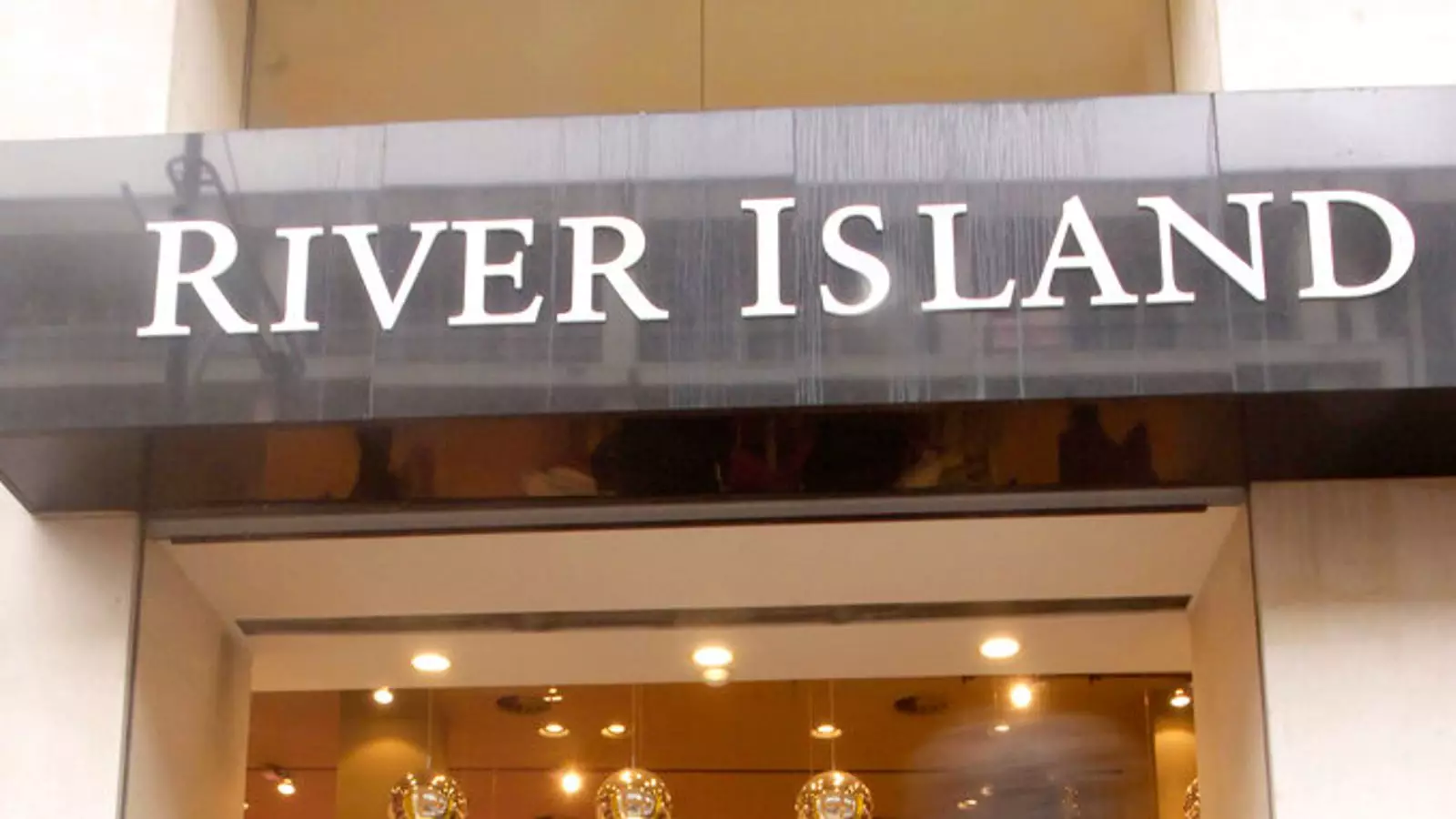The recent news surrounding River Island, one of Britain’s most iconic high street fashion retailers, paints a grim picture for the future of the fashion industry in the UK. The family behind River Island is reportedly orchestrating a drastic rescue plan, potentially jeopardizing numerous stores and thousands of jobs in the process. This alarming situation not only reflects the brand’s current struggles but encapsulates a larger trend sweeping through the retail sector, where traditional business models are being relentlessly challenged by economic uncertainties and changing consumer behaviors. This isn’t merely a corporate restructuring; it’s a wake-up call for the entire industry.
River Island, with its rich history dating back to 1948, has been a staple in consumers’ wardrobes. However, its operation of roughly 230 stores, employing around 5,500 individuals, now hangs in the balance. The company’s reported £33.2 million pre-tax loss and a staggering 19% drop in turnover to £578.1 million underscore the dire circumstances it faces. The involvement of PricewaterhouseCoopers (PwC) to draft a formal restructuring plan further suggests that River Island is in a fight for survival. The age-old adage rings true: adapt or perish.
Consumer Behavior in Flux
The retail landscape is evolving at an unprecedented pace. As highlighted in River Island’s accounts, the shift in customer preferences towards diverse, convenient, and expedient shopping experiences is reshaping the industry. While the company acknowledges these changes, it appears to have underestimated the speed at which they have materialized. Today’s consumers are not merely looking for products but experiences—something that traditional retailers often fail to provide. The competition from digital platforms has not only intensified but has also set a new standard that physical retailers struggle to meet.
In a world where online shopping reigns supreme, brands must think beyond the confines of their brick-and-mortar establishments. The emphasis should not just be on revamping stores but rather on cultivating a seamless omnichannel experience that bridges online and offline shopping. Unfortunately, it seems that River Island, among many others, has been slow to innovate, resulting in a reactive, rather than proactive approach.
The Economic Headwinds
In addition to the changing consumer preferences, various economic pressures are tightening their grip on retail. The list of challenges is long—geopolitical events disrupting supply chains, rising energy costs, and an ever-present inflationary environment have all contributed to declining disposable income and consumer confidence. With the recent tax changes implemented by Chancellor Rachel Reeves aiming to reshape the retail landscape, it comes as no surprise that many retailers, including River Island, find themselves struggling to navigate an uncertain financial future.
It raises an important question—why have policymakers failed to support an industry that employs so many? As River Island grapples with its financial woes, one must wonder if there will be adequate measures adopted to ensure the survival of not just this retailer, but the broader retail ecosystem.
The Imperative for Transformation
While the imminent restructuring plan is focused on resolving immediate financial issues, it should also serve as a catalyst for deeper transformation. Retailers like River Island must embrace innovation, re-evaluating their business models through a contemporary lens. This means not simply tweaking operational inefficiencies but rather rethinking their brand’s purpose and presence in the marketplace.
Brands that ignore these fundamental shifts may find themselves adrift, navigating a turbulent sea with outdated strategies. The choice is in their hands: innovate to thrive or be swept away by the very currents they’ve long overlooked. The stakes have never been higher, and River Island’s current predicament serves as a sobering reminder of the need for agility and foresight in an unpredictable landscape.
How River Island responds to these challenges will carry significant weight—for itself, its employees, and the broader retail market. It’s a turning point for a brand that has seen triumph and trial; the path it carves from here could redefine not only its future but that of many retailers forced to adapt or perish in the face of relentless change.

Leave a Reply